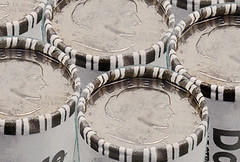
PREV ARTICLE
NEXT ARTICLE
FULL ISSUE
PREV FULL ISSUE
INSIDE STORY OF THE SACAGAWEA DOLLAR
In another straight-from-someone-who-was-there story, former U.S. Mint Director Philip Diehl recounts the story of the creation of the Sacagawea Dollar in his weekly column at CoinWeek. Click thru to read the full article online.
-Editor
The story of the Sacagawea dollar cannot be understood outside the context of the failure of the Susan B. Anthony dollar (SBA) in 1980. When dollar coin legislation was filed in 1995, I conducted a quick post-mortem of the SBA to understand the causes of its failure. The first thing I discovered was the remarkable fact that the experience was so negative for Mint staff you’d have thought it happened a year ago. The Mint was so thoroughly criticized, scapegoated really, that no one wanted to contemplate going through it all again. I also discovered that the Mint had little to do with the SBA’s failure. Treasury had conducted a good analysis of what was required to make a new dollar coin successful, which Congress and Treasury largely ignored. In particular, the SBA was not sufficiently distinctive to avoid confusion with the quarter and, most crucially, the dollar note was not withdrawn along with introduction of the SBA. The Mint simply followed orders from Congress and Treasury. It didn’t help that the coin lacked aesthetic appeal. I was told that Treasury secretary Michael Blumenthal found the design so unattractive that he initially rejected it, but that Ms. Anthony’s descendants insisted the coin reflect a realistic depiction of her. The Mint was a very dysfunctional organization in 1995, and virtually everything that needed to be done to overhaul the place required an Act of Congress—literally. Addressing serious management issues stemming from political patronage, fixing the Mint’s financial management and information systems, acquiring modern coin production technology, improving customer service, increasing die-making capacity, reducing workplace injuries, transforming our security guards into a modern police force–all of it required enactment of legislation. There was no way to do any of this while keeping a low profile. I had spent much of my career in and around politics and government, including in the U.S. Senate, and I had a pretty good understanding how to get things done. I was sworn in a director of the Mint in June 1994, and six months later Republicans took control of Congress-bad news for a Democratic administration. However, it worked out well for my agenda. I developed strong partnerships with the Republican chairmen of two key House committees, Jim Lightfoot (Iowa) and Mike Castle (Delaware), and with Democrats Steny Hoyer (Maryand) and Senator Paul Sarbanes (Maryland). This was another time, when it was still possible for Democrats and Republicans to work together for a common goal. It wouldn’t be possible today. But the overhaul of the Mint is another story.
Congratulations to CoinWeek for landing Diehl as a contributor. I'd encouraged him to publish some of his recollections in The E-Sylum several years ago, but it was a busy time in his career and it didn't work out. But it was worth the wait - his articles are a great inside look at the business of running the nation's mint.
-Editor
To read the complete article, see: The Real Diehl: The Inside Story of the Sacagawea Dollar (www.coinweek.com/featured-news/real-diehl-inside-story-sacagawea-dollar/)

Wayne Homren, Editor The Numismatic Bibliomania Society is a non-profit organization promoting numismatic literature. See our web site at coinbooks.org. To submit items for publication in The E-Sylum, write to the Editor at this address: whomren@gmail.com To subscribe go to: https://my.binhost.com/lists/listinfo/esylum All Rights Reserved. NBS Home Page Contact the NBS webmaster 
|
